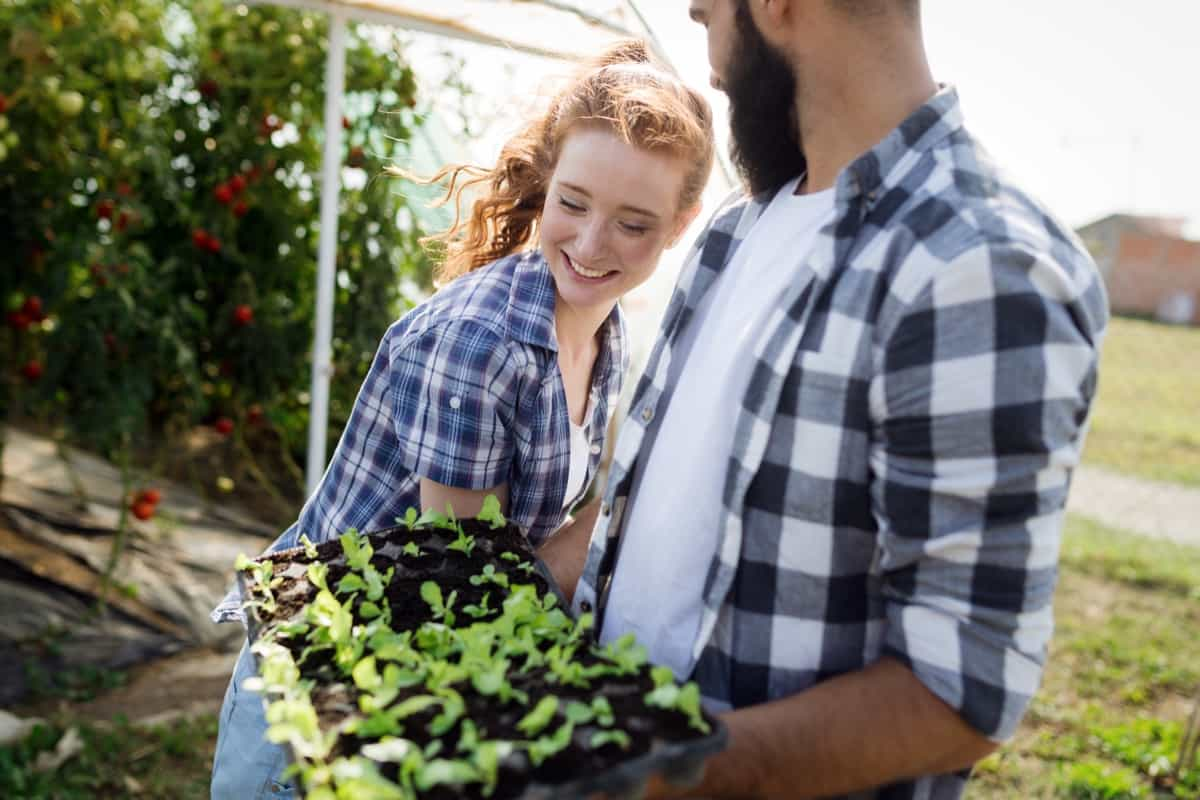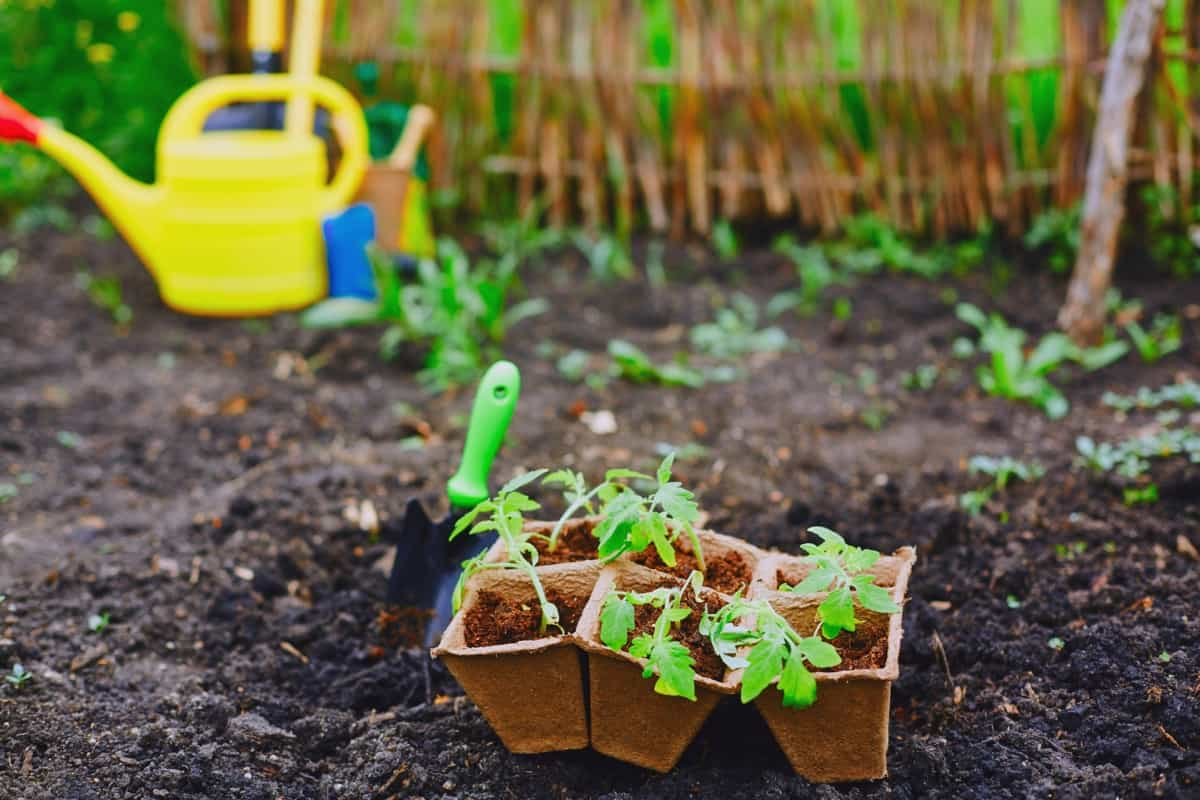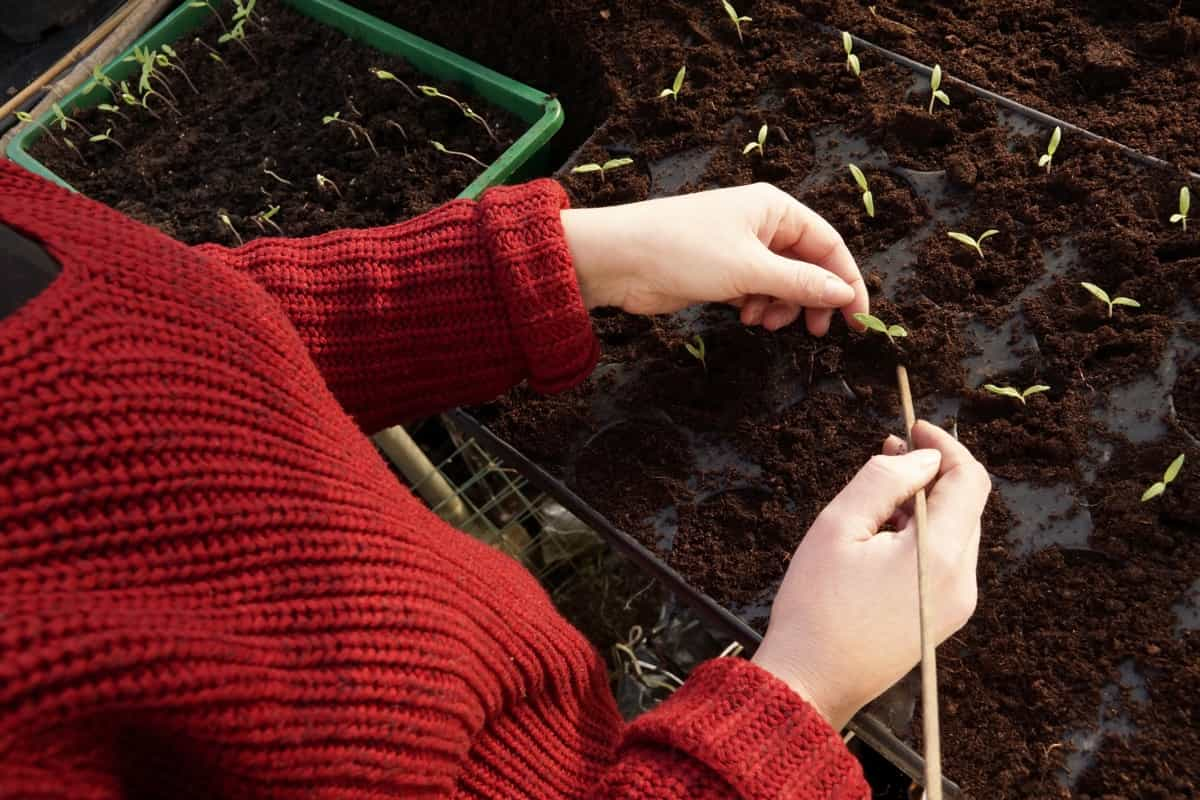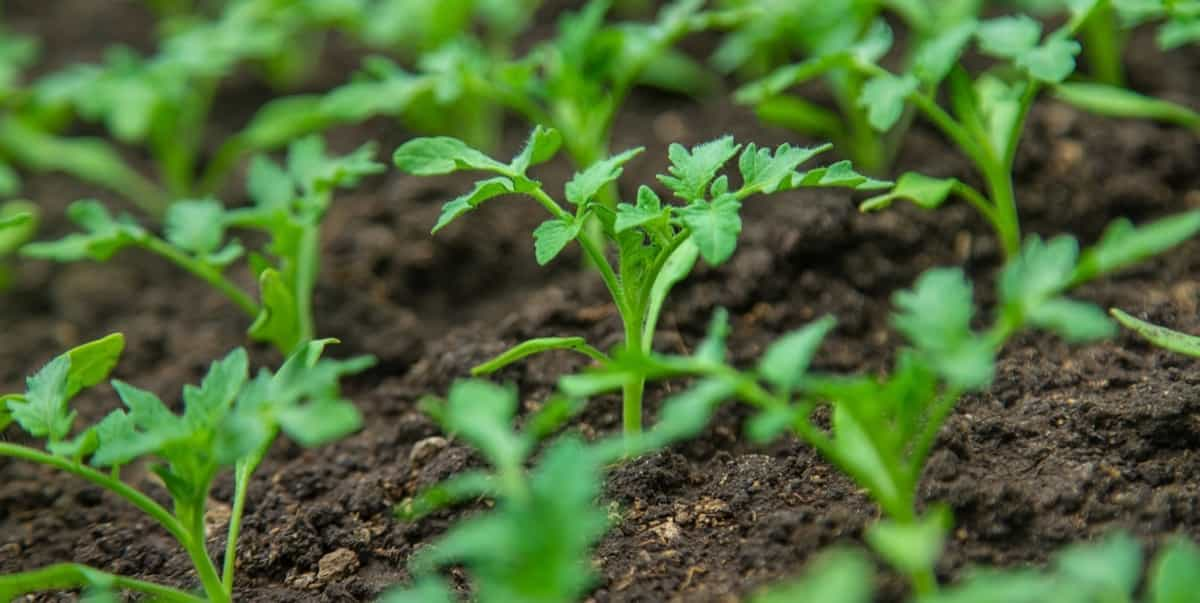Transplanting tomato seedlings is a critical step in their growth journey. It involves moving them from their initial containers to larger pots or directly into the ground. However, before you proceed with transplanting, there are several factors you should consider to ensure the success of your tomato plants. Here are ten things to check before transplanting tomato seedlings:

When to Transplant Tomato Seedlings
When is the Best Time to Transplant Tomato Seedlings Outdoors?
- When to Transplant Tomato Seedlings Temperature: If you are wondering when to transplant them into the garden, the answer is when the temperature gets warm enough – they thrive at 70˚F. Until then, you pot them up, wait for the thermometer to rise, and then transplant them into their final growing spot.
- How Many Days to Transplant Tomato Seedlings: Tomatoes take between six and eight weeks to grow from seed to transplant.
- Best Time of Day to Transplant Tomato Plants: All you need is two to three inches above ground. And always plant in the evening, never in the morning;
What are the Signs That Tomato Seedlings are Ready for Transplanting?
True Leaves: Tomato seedlings initially develop small, thin leaves called cotyledons. These are not considered true leaves. As the seedlings mature, they will grow larger, more distinct leaves known as true leaves. When tomato seedlings have developed a few sets of true leaves, it is a good indication that they are ready for transplanting.
Root Growth: Before transplanting tomato seedlings, it is important to check their root growth. Gently remove a seedling from its container and examine the roots. If the roots have filled the container and are starting to form a dense, tangled mass, it is a sign that the seedling is ready for transplanting.
When is it Too Late to Transplant Tomatoes: It is too late to grow tomatoes if they don’t have time to mature before winter frost arrives. Depending on the variety, these plants need 60 to 100 days to grow before the first frost.
How Long Should Tomato Seedlings Be Grown Indoors Before Transplanting?
Tomato seedlings should be grown indoors for 6 to 8 weeks before transplanting. This timeframe allows the seedlings to develop a strong root system and sturdy stems, which are essential for withstanding the challenges of outdoor conditions.
How Long for Tomato Seeds to Germinate Indoors: Plants begin to grow from seeds when they break open to form roots, stems, and leaves; at this point, they are called seedlings. If given optimal conditions, tomato seeds usually germinate in five to ten days.
Can Tomato Seedlings be Transplanted Directly Into the Garden?
The best time to transplant tomato seedlings is when they are about two-four inches tall and have their first set of true leaves. True leaves appear after the cotyledons, the first two leaves that appear on a tomato seedling whose job is to provide food for the seedling. Once your seedlings reach this size, it’s time to move them into individual pots.
In case you missed it: How to Grow and Care for Green Zebra Tomatoes: A Guide to Planting to Harvest

Eventually, you will transplant them into your garden when the weather is warm and sunny, and you have had time to acclimate your tomato plants to the outdoors. You want your tomato plant to have a strong root system before planting them in the ground. If transplanted in this manner, they will have a better chance of surviving.
What Temperature is Ideal for Transplanting Tomato Seedlings?
Generally, it is recommended to wait until the soil temperature reaches a minimum of 15°C before transplanting tomato seedlings. This temperature range provides a favorable environment for young plants to establish roots and avoid potential stress.
In addition to the soil temperature, it is also essential to consider the air temperature during the day and night. Tomato seedlings thrive in moderate temperatures; the best temperature for tomato seedlings with daytime temperatures ranging between 21°C to 29°C and nighttime temperatures around 15°C to 18°C. These temperature conditions promote healthy growth and reduce the risk of tomato transplant shock.
Should I Harden Off Tomato Seedlings Before Transplanting?
When starting the hardening-off process, choose a period when the daytime temperature is maintained consistently above 15°C, and the nighttime temperature does not drop below 10°C as Hardening off tomato plants temperature. This range provides a favorable temperature for the seedlings to adjust to the outdoor environment without experiencing significant temperature shocks.
What Precautions Should I Take When Transplanting Tomato Seedlings?
If you move seedlings outside too quickly and do not give them time to adapt, and leads to tomato transplant shock. Because of the sudden change in conditions and sun scorching, which can result from excessive sunlight exposure, the plants become stunted or, in some instances, stop growing altogether. Before transplanting seedlings, gradually expose them to outdoor conditions to acclimate them.
In case you missed it: Best Tasting Tomatoes to Grow in Virginia: Time to Plant, Types, and Varieties

You can start by exposing them to the outdoors for a few hours each day, gradually increasing the time over 7-10 days. After transplanting tomato seedlings, it is crucial to water them properly. Continue watering the transplanted seedlings regularly after planting, keeping the soil moist. You should avoid overwatering, which can lead to root rot.
Can I Transplant Tomato Seedlings in Containers Instead of the Ground?
Transplanting tomato seedlings from containers instead of planting them directly in the ground is a viable option for gardeners with limited space or those who prefer container gardening. When the seedlings are ready for transplanting, gently remove them from their original containers, careful not to damage the delicate roots.
Dig a hole in the potting soil of the container, deep enough to accommodate the seedling’s root ball. Ensure that the seedling’s root ball is level with the soil surrounding it before planting. Support the seedling by gently filling the hole with potting soil and firming it around it.
Are There Specific Soil Conditions Required for Transplanting Tomato Seedlings?
What is the best type of soil for tomato plants? Tomato plants do well in almost all soil types except heavy clay. Mix several inches of organic matter, compost, or well-aged animal manure into the upper 4-8 inches of soil before planting.
- Soil pH: Tomato plants prefer a slightly acidic to neutral soil pH range of 6.0 to 7.0.
- Soil Texture: The ideal soil texture for tomato seedlings is loamy soil, a combination of sand, silt, and clay. Loamy soil provides good drainage while retaining adequate moisture for the plants’ roots.
- Soil Temperature: Tomato seedlings prefer warm soil for optimal growth. The soil temperature must be around 15°C or higher for successful transplanting.
- Drainage: Adequate drainage is vital for tomato plants to prevent waterlogged soil, which can lead to root rot and other diseases.
- The Best Soil Type to Grow Tomatoes in Pots: Good peat or compost-based soil is ideal, whether purchased or mixed from your special recipe.
What Are the Common Mistakes to Avoid When Transplanting Tomato Seedlings?
- Transplanting Too Early: One of the most common mistakes when transplanting tomato seedlings is doing it too early.
- Improper Hardening Off Hardening off is gradually exposing seedlings to outdoor conditions to acclimate them to the sun, wind, and temperature variations. Failing to harden off tomato seedlings properly can lead to sunburn, wilting, or even death.
- Planting Too Deep or Too Shallow: The depth at which tomato seedlings are planted can greatly impact their growth. Planting them too deep can result in weak stems and poor roots while planting them too shallow can lead to instability and susceptibility to wind damage.
- How to Fix Tomato Transplant Shock: Provide proper care and watering, gradually acclimate the plants, and avoid over-fertilization.
- How Long Does Tomato Transplant Shock Last: Transplant shock typically lasts about 1 to 2 weeks.
In case you missed it: When to Transplant Cucumber Seedlings: 9 Things to Check Before Your Start Growing

Conclusion
By checking these 10 things before transplanting your tomato seedlings, you can increase your chances of success and enjoy a bountiful harvest. Remember to provide proper care and maintenance after transplantation to ensure the optimal growth of your tomato plants.
- Feed Your Flock for Less: Top 10 Tips to Save on Chicken Feed
- Ultimate Guide to Ossabaw Island Hog: Breeding, Raising, Diet, and Care
- Hatching Answers: The Top 10 Reasons Your Chickens Aren’t Laying Eggs
- Eggs and Economics: Breaking Down the Cost of Raising Backyard Chickens
- Defend Your Greens: Proven Methods to Keep Iguanas Out of Your Garden
- Ultimate Guide to Cinnamon Queen Chicken: A Comprehensive Guide for Beginners
- Ultimate Guide to California Tan Chicken: Breeding, Raising, Diet, Egg-Production and Care
- Ultimate Guide to Marsh Daisy Chicken: Breeding, Raising, Diet, and Care
- 10 Types of Chicken Farming Businesses You Can Start for Profits